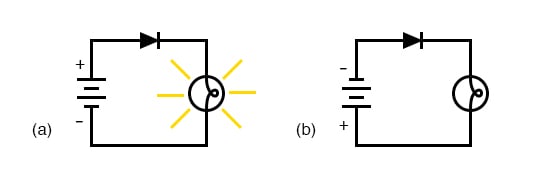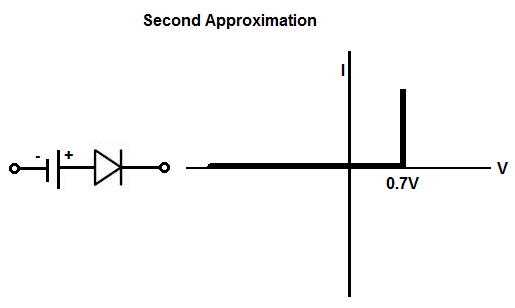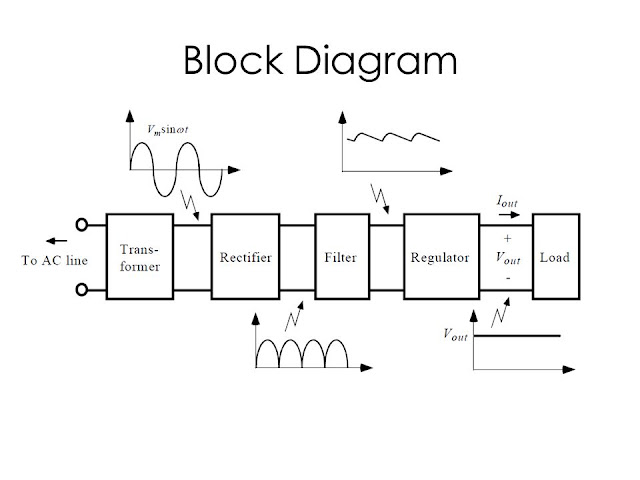A one of the basic circuit element with numerous applications. Diode is a semiconductor device which allows the flow of current only in one direction and stops the flow of the diode in the opposite direction.
Due to this peculiar behaviour of diode it is used in making power supplies especially mobile phone charges and adaptors of laptops and etc.
Ideal Diode:
An ideal diode is shown in the figure above. An ideal diode behaves as a short circuit when operated in forward direction ( forward biased region) and acts as an open circuit when operated in reverse direction ( reverse biasing region). An ideal diode has zero voltage drop at its terminals.

In the figure a above it can be clearly see that when positive terminal of the battery is connected with the positive terminal of the diode. in this case the diode is short circuited and current will flow through the circuit and bulb will glow
In figure b negative terminal of the battery is connected is with the positive terminal of the diode. In this case diode is reverse biased and no current will flow through the circuit, diode will act open circuit and the bulb will not glow.
Silicon Diode:
There is a difference of potential barrier between an ideal diode and silicon diode and the value of that barrier is 0.7 V
The literal meaning of this case is that silicon will not conduct the current at 0V or 0.5V but will start conduction from 0.7 V
In the figure below a silicon diode can be seen in such a way that a potential difference is 0.7 V is connected with an ideal diode and the graphical representation of the silicon diode is also shown below
In the I V curve of the graph it is clear that when the input voltage will be 0.7V then the diode will start conduction




Comments
Post a Comment